
Christy Sports – Bike Gear Buying Guide
How To Choose The Right Bike Gear
There are many different disciplines of biking that require different amounts of specialized equipment. For a casual ride on paths around town, all that is needed is a helmet. For a long day out mountain biking, more gear is necessary to stay safe and comfortable. No matter what sort of biking gear you need, Christy Sports has you covered. Consult this buying guide to gain a better understanding of the bike gear that suits your needs.
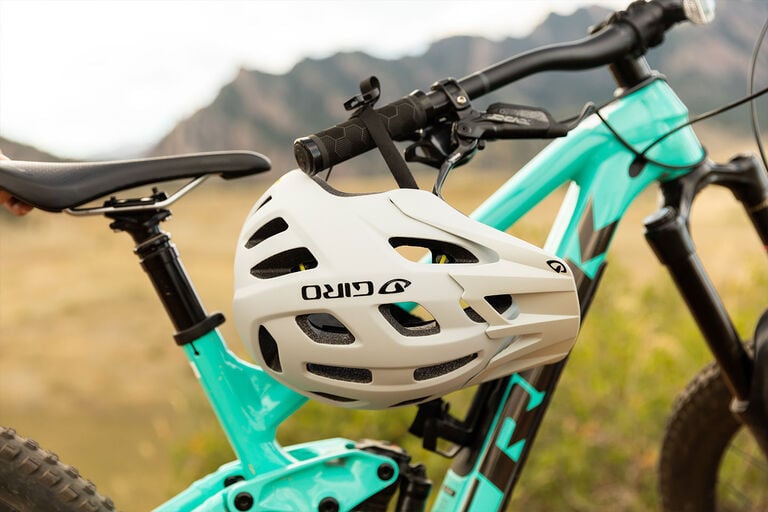
Helmets
Wearing a helmet while biking, no matter what kind of biking or how far the distance, is always a smart choice. Any helmet is better than no helmet whether you’re going for a short ride around town or a long mountain bike ride. A well-fitting helmet designed for the kind of riding you most often intend to do will be most comfortable and offer the most appropriate form of protection. Helmet construction is very similar regardless of model or intended use: a thin plastic shell covers the EPS foam that makes up the main body of the helmet. Many brands use additional technology to help cushion the force of an impact, such as MIPS technology or Giro’s spherical system that provides additional protection against rotational impacts. Helmets designed for road riding are sleeker, more low-profile, lighter and offer more ventilation. Mountain bike-specific helmets are usually a bit thicker and heavier, offer more protection for the back and sides of the head, and often come with a visor whereas road helmets do not. They are designed to protect against the more varied types of impacts that can occur while mountain biking. For aggressive enduro or downhill mountain biking, some riders opt to wear a full-face helmet that protects the jaw and covers more of the back and sides of the head. These helmets are far less ventilated and not comfortable to wear for longer periods of pedaling but offer maximum protection. Additional features that can differentiate otherwise similar helmets are innovative buckling technologies like Fidlock or indentations on the rim and visor that help to hold sunglasses in place while not being worn. At the end of the day, the fit and style of the helmet are most important. A helmet that is comfortable, fits well, meets the intended use, and hopefully looks good too, will be the best one to purchase. Visit a Christy Sports bike retail location to try some on!
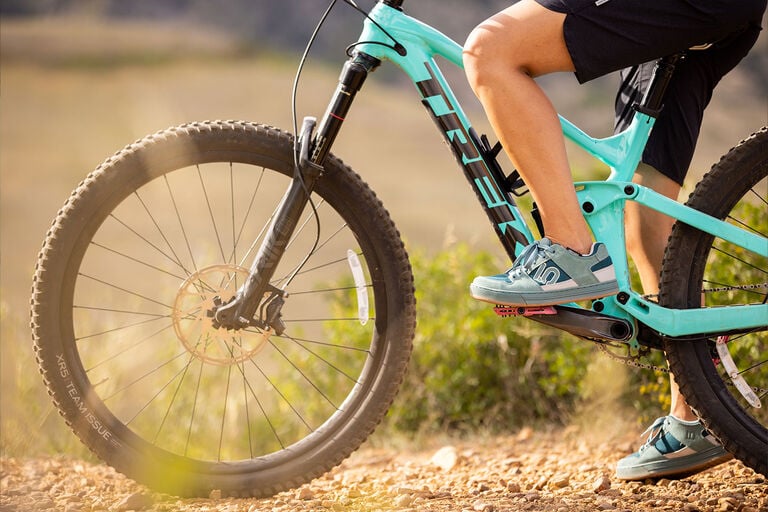
SHOES
Bike-specific shoes are an important purchase for dedicated mountain or road riders. The first factor to consider when purchasing bike shoes is whether you plan to ride flat pedals or clipless pedals. Shoes designed for flat pedals have a flat, sticky rubber sole that helps to grip the pins of the pedal. Clipless shoes have adjustable t-nuts so you can mount the pedal cleat of your choice. There is a wide range of mountain bike-specific shoes, ranging from thicker-soled, heavier models that are designed to offer maximum protection and grip for downhill riding to sleek, thin-soled and minimalist models intended to provide optimal power transfer for cross-country riding, and many that fall on a spectrum in between. The shoe’s lacing system is one of the primary factors that impacts price. Shoes with a BOA technology lacing system can achieve the snuggest, most optimal fit, but are generally the most expensive. Other lacing systems like Velcro straps, ratchet buckles, and traditional laces are common and result in a less expensive product but can lack the snug fit that BOA provides. Many riders size their bike shoes slightly smaller than street shoes for a snugger fit, so trying shoes on is important. This is especially true for riders that are looking to optimize their pedaling efficiency. Downhill-oriented riders and those who use flat pedals sometimes prefer a softer-soled shoe with a more average fit, allowing them to shift their foot and conform it to the pedal as they ride. Stop by a store to try some on and find the shoe that best fits your riding style and needs.
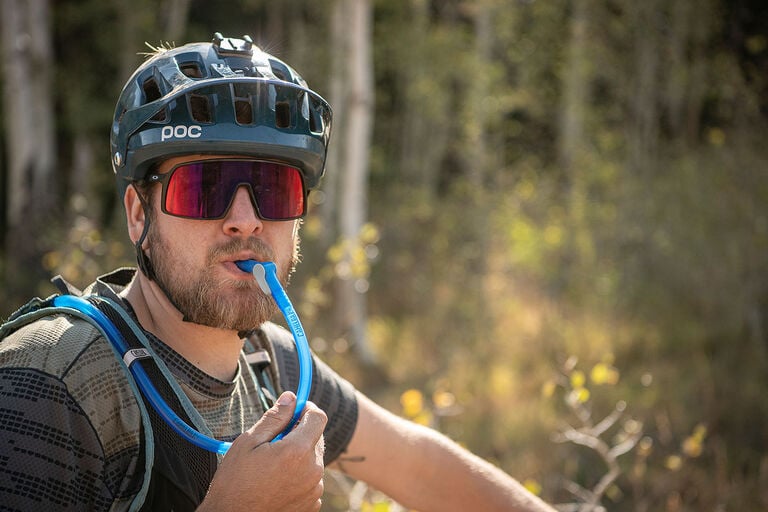
PACKS & HYDRATION
It is important to be prepared for anything when embarking on a day of mountain biking. Having ample food and water, layers for inclement weather, and tools to do trailside repairs is a good idea, and a pack of some kind is necessary to carry these items. The two main kinds of riding packs are hip packs and backpacks. Hip packs come in a variety of sizes, from small ones that can only fit a few small items, to larger packs that include water bladders and can hold tools, snacks, and a light layer. Some hip packs have a bottle sleeve so you can bring additional water without having to move up to a larger pack. Many riders prefer hip packs because they do not cause the sweaty back that is common with backpacks and avoid the restrictive feeling that some riders experience with backpack straps. However, hip packs tend to bounce around a bit, whereas the more secure shoulder and chest straps of a backpack can feel more stable, especially when carrying more gear. Mountain biking backpacks can usually carry far more gear and water than hip packs and are great for all-day adventures where additional preparedness is required. They often include water bladders, bike-specific tool pouches, and variety of pockets to hold food, layers, and anything else one might need. Dedicated riders might have a couple different packs to suit different lengths of rides. If you are looking to purchase your first mountain biking pack, consider what sort of rides you will be doing and what gear you might want to bring before deciding on the product that suits your needs.
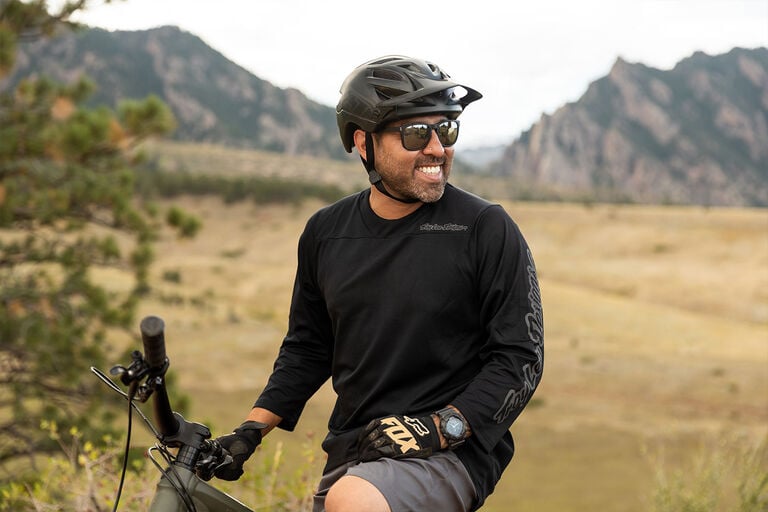
APPAREL
Mountain biking apparel is mainly about comfort, functionality, and style. Bike-specific clothing is not necessary to have a great day out on the trails, but it can help you feel more comfortable, better carry your personal items, and look the part! Whereas road bikers often wear tight-fitting jerseys and shorts, mountain bike clothing is looser fitting to improve comfort when out in the mountains. Bike jerseys are made from breathable synthetic fabrics that help keep the rider cool and comfortable. They can include features like small, zippered pockets for carrying items like keys and integrated microfiber wipes for cleaning sunglasses. Mountain bike shorts feature a variety of pockets with zippers designed to carry important items like a phone or wallet without ejecting them onto the trails during a ride. Finally, don’t forget about the all-important chamois liner! Having some extra padding between you and the saddle can make a huge difference for comfort on longer rides. Many bike shorts come with a padded liner included, so check to see if the pair you’re considering have that feature before purchasing an additional chamois.
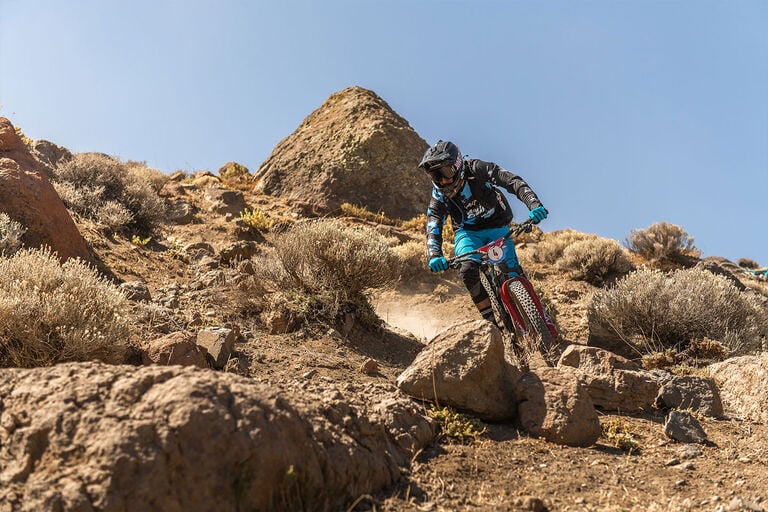
PROTECTIVE GEAR
No one intends to take a spill when they head out for a ride, but it can happen to anyone at any time. Having proper protective gear like knee pads can make a difference between walking away from a crash without a scrape or having significant bumps and bruises. Knee pads are the most common additional padding that mountain bikers wear to protect themselves. They range from thin, flexible models that balance protection with all-day comfort to heavy-duty pads with plastic shells that cover much of the knee and shin and provide significant protection against big crashes and scrapes. Elbow pads provide additional protection and run a similar gamut of varied styles from light and minimal to burly and substantial. Aggressive downhill riders who spend lots of time at lift-accessed bike parks may want even more padding, such as chest protectors and shoulder pads. Many riders forego additional pads because they can be sweaty and uncomfortable to wear for long periods of climbing, but few skip wearing protective eyewear. The most common kind of eye protection is simple—sunglasses! Sunglasses do more than just block the sun’s glare. They prevent dirt, rocks, and mud from kicking up and damaging the eyes or impeding vision. For cloudy days, many bike-specific sunglasses come with interchangeable clear lenses to still offer this protection. Downhill-oriented riders often choose to wear goggles instead of glasses to provide even more eye protection. Goggles are the optimal choice for keeping vision clear of dust and dirt while riding downhill, but their lack of ventilation makes them far less comfortable for long days in the saddle that include both uphill and downhill riding.


